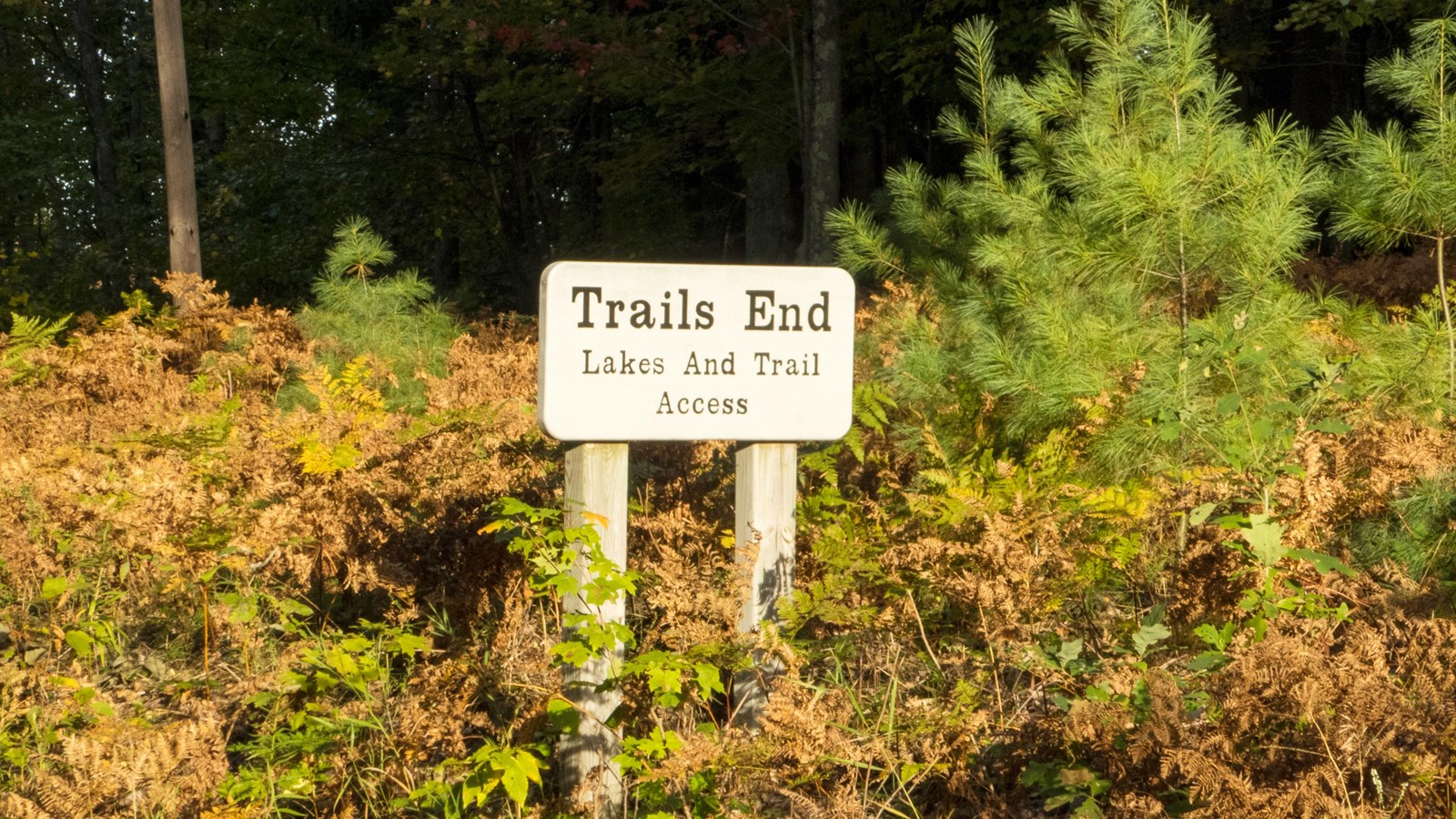Last updated: September 28, 2025
Place
Platte Plains Trail - Bass Lake Loop Trailhead

Parking - Auto, Picnic Table, Toilet - Vault/Composting, Trailhead
Platte Plains, the park's most expansive trail system, spans nearly 15 miles total through low dunes with three main loops to explore and a walk-in campground. It's a perfect place to spend the day: pack a picnic, bring your canoe and fishing poles, tie up your hiking shoes, and enjoy the outdoors with family. The trail is surrounded primarily by pine-oak-aspen woods; open fields and lakes are scattered throughout plains.
Pets are NOT allowed on trail from December 1 to March 31.
Distance
Several loops totaling 14.7 miles
Terrain
Mostly flat. Some short, steep hills on the Lasso Loop and some moderate hills along the intermediate level ski trail segments
Vegetation
Primarily pine-oak-aspen woods with some open fields and pine plantation
Comments
Three views of Lake Michigan
There are a number a trail routes you can take, easy, intermediate and advanced: options for every user. Signs are not posted at every intersection so keep your eye on the map.
Otter Creek Loop is a 4.6-mile trail that takes you through the woods around Otter Creek and Otter Lake. The terrain is flat and easy through this section.
Bass Lake Loop is a 3.5-mile trail follows a winding course across gently rolling hills through pine-hardwood forest and passes Bass Lake, Deer Lake, and wetland areas. Enjoy the view and wildlife from the bench at the Bass Lake water access. Look for ripening wintergreen berries along the trail mid-loop in the fall.
Lasso Loop is a 6.3-mile trail with diverse terrain and the most difficult terrain in the plains; a few steep ridges and tight switchbacks can be challenging at times, but it offers the best views of Lake Michigan. Take the more strenuous 1.6-mile round-trip spur at the #5 post past the White Pine Backcountry Campground to a quiet Lake Michigan beach and enjoy one of the finest beach walks in the northern lower peninsula.
Be aware: the mosquitoes can be vicious; make sure to bring repellant.
First time hiking in the lakeshore? Follow these tips
Ridges and swales
The Platte Plains are not your traditional plains with fields, but it is a lowland area between the Platte River, Otter Lake, and Lake Michigan. A satellite view of Platte Bay reveals the ancient shoreline sand dunes, which mark the successive positions of Lake Michigan after each intrusion of glacial ice melted. These geological landforms are called ridges and swales. From the trails, however, they're steep hills.
Take the Trail Trekker Challenge
Do you think you can hike all of the trails in one year? Want to explore the landscape of Sleeping Bear Dunes National Lakeshore, exercise, and have fun all at the same time? Join the Trail Trekker Challenge! Earn a prize and bragging rights by successfully completing each of the 13 mainland trails in the National Lakeshore. Hiking is a great way to get daily physical exercise and promote health while also discovering the beauty of the area. What better way to get your muscles warm, your heart pumping, and your senses savoring the views!
Pick up a copy of the Trail Trekker Challenge brochure/logbook at the visitor center in Empire.
